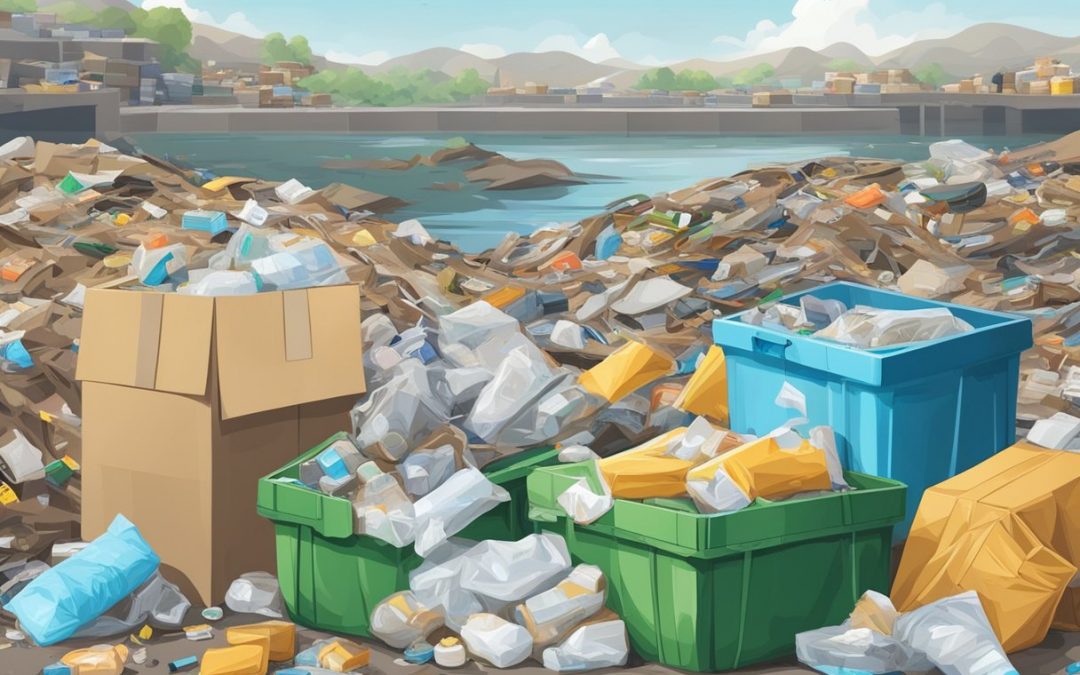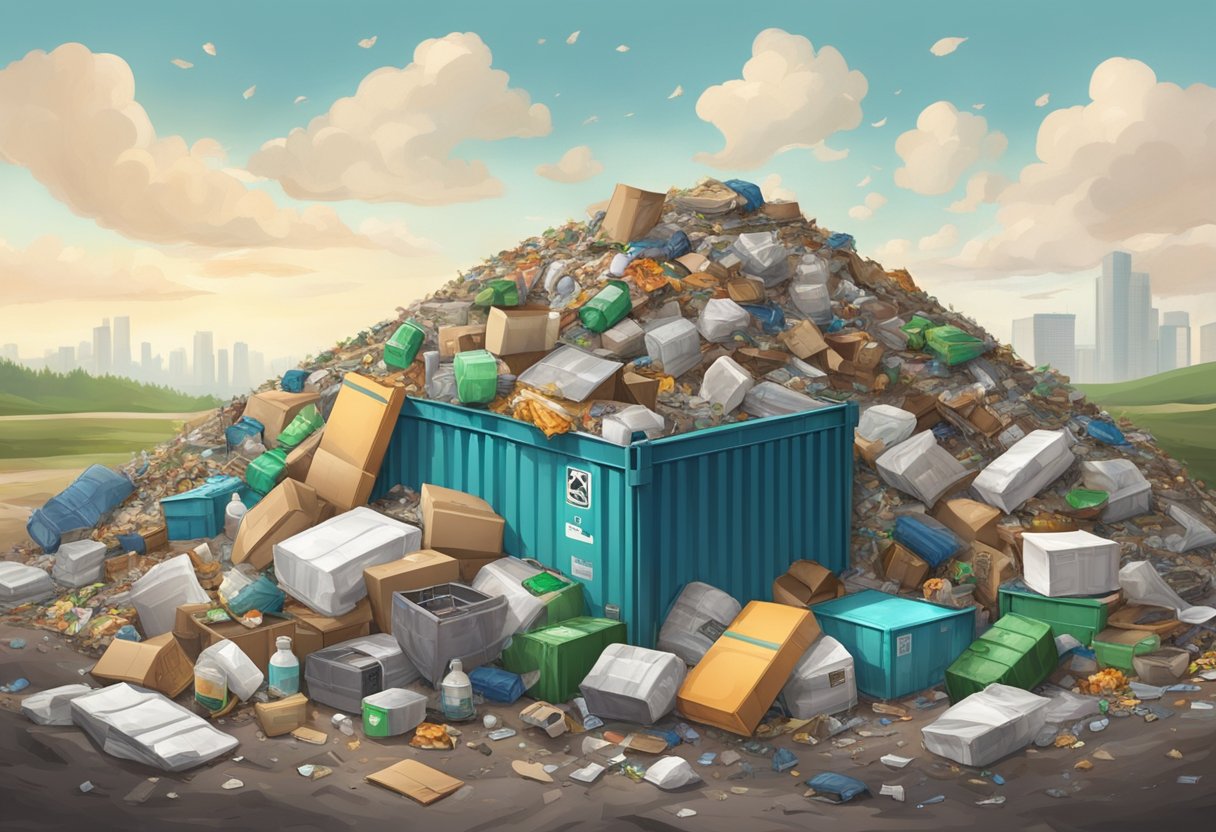Product Returns: Impacts and Insights
Product returns are a standard part of the consumer experience, often seen as a hassle-free way to exchange unwanted items for something more suitable or to get a refund. However, the environmental impact of this seemingly simple process is significant and multifaceted. When a product is returned, it sets off a chain of events that often leads to a surprising amount of waste and carbon emissions. The assumption that a returned item seamlessly goes back on the shelf for resale is frequently incorrect; many items end up in landfills or are disposed of in ways that cause harm to the environment.
It is estimated that 5 million tons of product returns end up in US landfills each year!
The rise of online shopping has only exacerbated the issue, with the ease of returns contributing to an increase in the volume of items being sent back. Each return initiated triggers logistics processes including transportation, handling, and repackaging – activities that contribute to carbon emissions and the use of additional resources. These emissions add to the strain on the environment, particularly when the items are shipped over long distances. Additionally, the handling of returns often requires the use of more packaging materials, which may not always be recyclable or biodegradable.
Companies and consumers alike are becoming increasingly aware of the challenges product returns pose to sustainability. Efforts to mitigate these effects include enhancing the efficiency of reverse logistics, reducing the need for returns through better product descriptions and sizing information, and implementing more sustainable packaging solutions. These measures aim to address the environmental impacts of returns, understanding that each item returned has a cost far beyond the price tag, a cost that ultimately affects the planet.
Environmental Impact of Product Manufacturing
Product manufacturing processes play a considerable role in shaping the environmental landscape through resource consumption, emission of greenhouse gases, and production of waste. The scale and intensity of these activities contribute significantly to environmental degradation.
Resource Depletion
Manufacturing demands high volumes of raw materials, which often leads to the depletion of natural resources. For instance, the mining of metals for electronic goods can lead to the exhaustion of these non-renewable resources. The extraction process itself might disturb local ecosystems and reduce biodiversity.
Carbon Footprint
The mass equivalent of carbon dioxide emissions is a crucial aspect of a product’s lifecycle.* These emissions arise from various stages in manufacturing, such as energy consumption for machinery operation and processing. They contribute to the overall carbon footprint, accelerating climate change.
Pollution and Waste Generation
Manufacturing can introduce pollutants into air and water bodies. Chemicals used in production processes can lead to harmful emissions and effluents. Additionally, industries generate substantial solid waste, with unused raw materials and defective products frequently adding to landfill volumes.
Consequences of Product Returns
The environmental footprint of product returns is significant and multifaceted, involving increased carbon emissions, waste management problems, and the excessive use of packaging materials.
Transportation and Carbon Emissions
Every returned product needs to be shipped back, often over long distances. This transportation leads to higher carbon emissions, as trucks, planes, and ships burn fossil fuels to move goods. The environmental impact of eCommerce product returns is considerable, as the increase in online shopping has led to more returns and thus more transportation.
Waste Management Challenges
Returned products don’t always end up back on the shelf. In many cases, they contribute to the growing problem of waste, as some items are discarded instead of resold or recycled. A report highlighted how 300,000 items were disposed of in a French Amazon warehouse within just three months, illustrating the waste generated by returned purchases.
Packaging Issues
Returns not only involve the product itself but also all the packaging that comes with it. The majority of this packaging is made from single-use plastics and cardboard, which often ends up in landfills. More sustainable packaging solutions are needed to mitigate the negative environmental effects associated with product returns.
Recycling and Repurposing Returned Products
When effectively managed, recycling and repurposing returned products reduce environmental waste and support sustainability efforts. These processes are integral to minimizing the impact that returns have on landfills and carbon emissions.
Sustainable Disposal Methods
Companies employ various sustainable disposal methods for returned products. For example, recycling initiatives convert materials into new items, thereby diminishing waste. Refurbishing allows products to be repaired and resold, reducing the need for new resources. Engaging in upcycling can also transform returned goods into higher-value products, demonstrating a commitment to waste reduction.
Secondary Markets
Secondary markets play a crucial role by selling products that cannot be returned to the primary market. Some companies have partnerships with retailers that sell returned goods at discounted rates. This not only prevents products from ending up in landfills but also provides consumers with more affordable options.
Circular Economy Benefits
Adopting a circular economy model fosters an environment where products and materials are reused and continually cycled through. Not only does this minimize waste, but it also extends the lifecycle of products, ensures more efficient use of resources, and often leads to innovation in product design and resource recovery.
Strategies for Reducing Returns
Minimizing product returns is critical to reducing the environmental strain caused by excessive waste and carbon emissions. The following strategies are centered on preventive measures to curb the volume of returns through thoughtful planning and customer education.
Product Design and Durability
Product longevity plays a substantial role in reducing returns. By focusing on materials that withstand wear and tear, manufacturers can ensure longer product lifespans. Integrating sustainability into product design not only appeals to eco-conscious consumers but also decreases the likelihood of returns due to product failure.
- Use high-quality, durable materials
- Design for repairability and modular updates
Accurate Product Descriptions
Clear and precise product information is essential. Online retailers must provide detailed specifications, accurate sizing charts, and high-resolution images to help customers make well-informed decisions. Effective communicationcan significantly diminish return rates by aligning customer expectations with the reality of the product.
- Include comprehensive product specifications
- Offer virtual try-on tools or augmented reality previews
Quality Control
Enforcing stringent quality control measures is imperative to detect defects before products reach consumers. Establishing robust protocols ensures that only items meeting the highest standards are shipped, thus reducing the chances of returns. Adopting a zero-tolerance policy for defects not only enhances brand reputation but also instills customer trust.
- Implement multi-stage quality assessments
- Regularly audit suppliers and production processes
To learn more about how Potomac eCycle can help you with your environmental issues, contact us.



Recent Comments